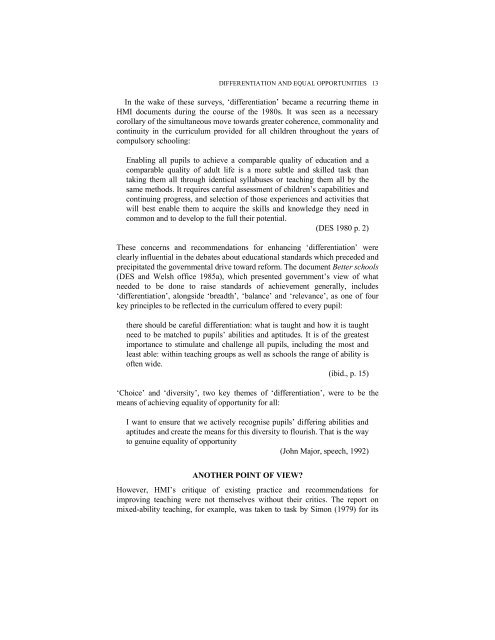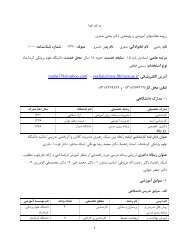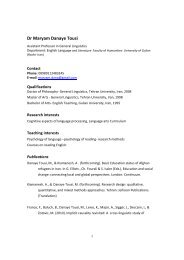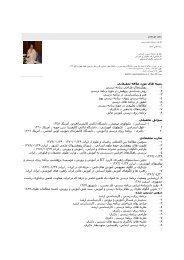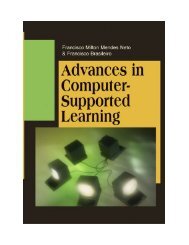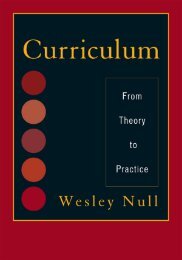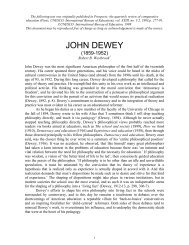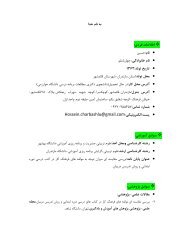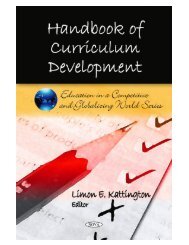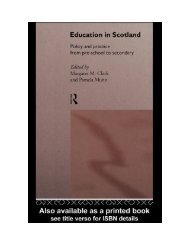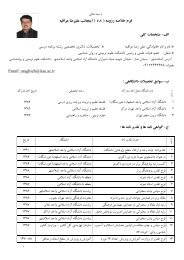Edited by
Edited by
Edited by
You also want an ePaper? Increase the reach of your titles
YUMPU automatically turns print PDFs into web optimized ePapers that Google loves.
DIFFERENTIATION AND EQUAL OPPORTUNITIES 13In the wake of these surveys, differentiation became a recurring theme inHMI documents during the course of the 1980s. It was seen as a necessarycorollary of the simultaneous move towards greater coherence, commonality andcontinuity in the curriculum provided for all children throughout the years ofcompulsory schooling:Enabling all pupils to achieve a comparable quality of education and acomparable quality of adult life is a more subtle and skilled task thantaking them all through identical syllabuses or teaching them all <strong>by</strong> thesame methods. It requires careful assessment of childrens capabilities andcontinuing progress, and selection of those experiences and activities thatwill best enable them to acquire the skills and knowledge they need incommon and to develop to the full their potential.(DES 1980 p. 2)These concerns and recommendations for enhancing differentiation wereclearly influential in the debates about educational standards which preceded andprecipitated the governmental drive toward reform. The document Better schools(DES and Welsh office 1985a), which presented governments view of whatneeded to be done to raise standards of achievement generally, includesdifferentiation, alongside breadth, balance and relevance, as one of fourkey principles to be reflected in the curriculum offered to every pupil:there should be careful differentiation: what is taught and how it is taughtneed to be matched to pupils abilities and aptitudes. It is of the greatestimportance to stimulate and challenge all pupils, including the most andleast able: within teaching groups as well as schools the range of ability isoften wide.(ibid., p. 15)Choice and diversity, two key themes of differentiation, were to be themeans of achieving equality of opportunity for all:I want to ensure that we actively recognise pupils differing abilities andaptitudes and create the means for this diversity to flourish. That is the wayto genuine equality of opportunity(John Major, speech, 1992)ANOTHER POINT OF VIEW?However, HMIs critique of existing practice and recommendations forimproving teaching were not themselves without their critics. The report onmixed-ability teaching, for example, was taken to task <strong>by</strong> Simon (1979) for its


